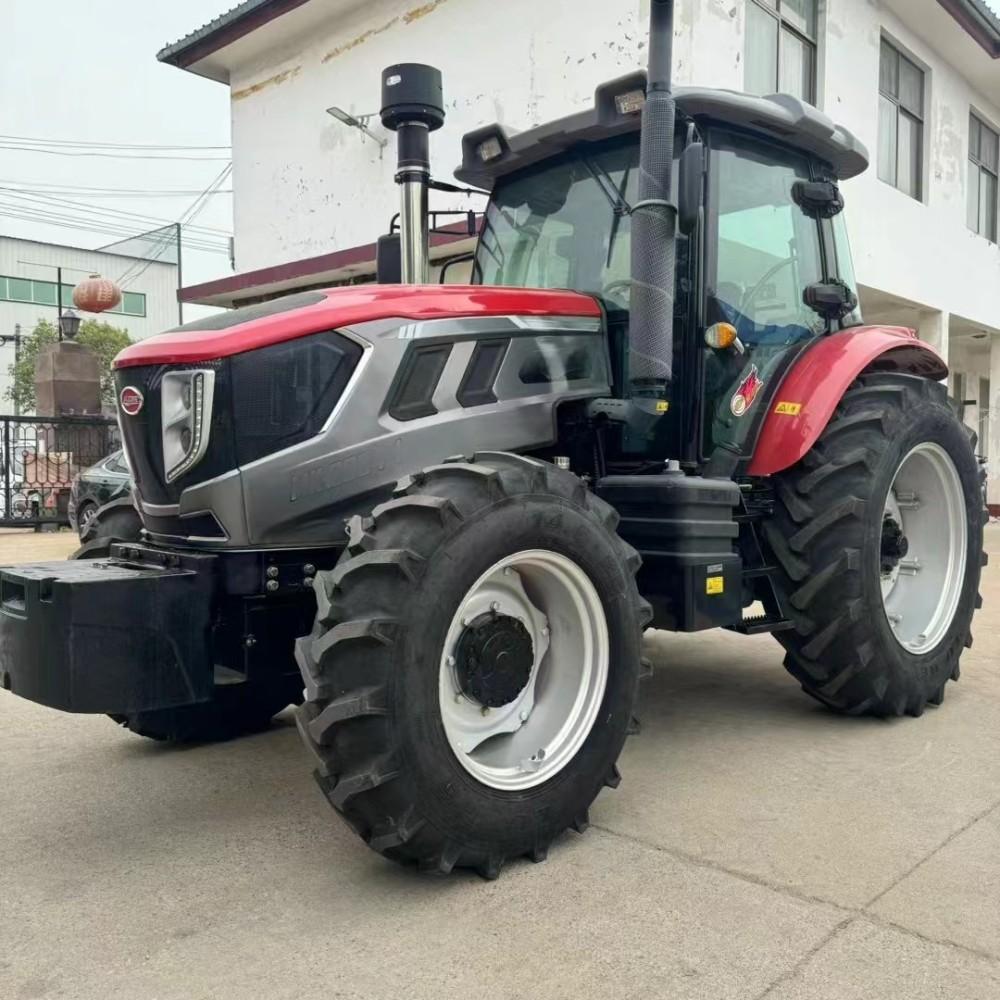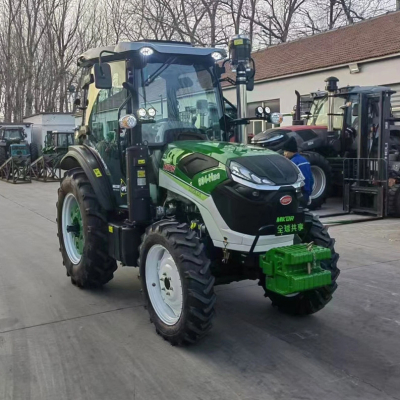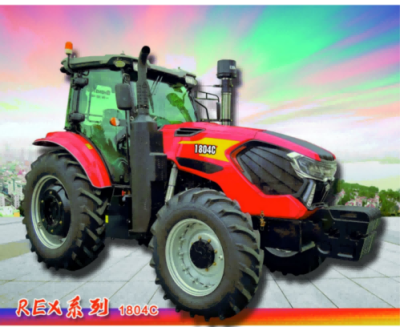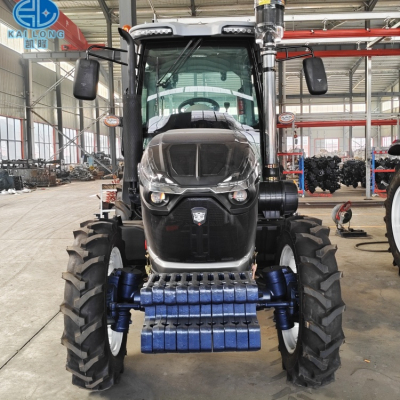The agricultural industry is experiencing a shining moment.
Supply chain management expert Martin Christopher argued in the 1990s that competition in the 21st century would no longer be between companies, but between supply chains.
With the transformation and upgrading of the manufacturing industry, China is becoming the world's largest manufacturing capacity, strongest supporting facility and largest consumer market. From a holistic point of view, the establishment and growth of high-quality manufacturing service industries determine the trend and quality of industrial development. With the fragmentation of media and channels, and the diversification of consumer demand, the demand for high-quality supply chains continues to grow, and supply chain “supply” rises to unprecedented heights.
As is well known, since entering the transformation and upgrading stage in 2015, the domestic agricultural machinery industry has moved from comprehensive large-scale growth to high-quality development, slowdown, efficiency improvement and gap filling have become clear labels for industrial development. Especially in recent years, against the backdrop of complex and changing international political situations, slow global economic growth and fierce industrial competition, the development model of the agricultural machinery industry has shown disruptive changes, with increasingly close cooperation and support between entire machinery enterprises and component enterprises.
In the cycle of transformation and upgrading in the agricultural machinery industry, the component enterprises of the agricultural machinery industry are also experiencing a magnificent transformation. For excellent component businesses, they are going to introduce a brilliant moment.
01 Current situation
Coupled with China's industrial system, the agricultural machinery industrial chain mainly includes upstream raw material and spare parts suppliers, midstream machinery manufacturers and downstream distributors and distributors.
Upstream raw materials mainly include steel, non-ferrous metals, rubber and so on. Aftermarket parts suppliers supply internal combustion engines, transmissions, bearings, tires and other parts. Mid-range machine manufacturers develop and produce agricultural machinery products for various functions in accordance with market demand and technological development trends. Downstream agricultural machinery distributors carry out distribution and promotion, sell agricultural machinery to operators, and are widely used in agriculture, forestry, livestock farming and fishing.
Agricultural machinery enterprises play a leading and chain role in the entire industrial chain, leading the upstream and downstream spare parts manufacturing enterprises and distributors.
In general, enterprises producing spare parts for agricultural machinery have several characteristics.
Firstly, the relatively low concentration of industry.
Every year, China produces and sells millions of types of agricultural machinery of all sizes and has more than 2,000 large machinery manufacturing enterprises. Behind these plants are more than 7,000 large parts manufacturing and processing enterprises, as well as small and micro-composite enterprises that cannot be accurately counted. Many component enterprises are decentralized, brand concentration is relatively low, and economies of scale are average.
Secondly, the overall strength is relatively weak.
Compared with agricultural machinery manufacturing enterprises, agricultural machinery component manufacturing enterprises are mainly small enterprises with weak overall strength, small scale and decentralized, the problem of homogenization is also common in traditional machinery manufacturing enterprises. Due to the large number of small and micro enterprises, uneven quality phenomena are not uncommon, serious shortages of talent, technology, processes.
Thirdly, the voting rights are lower than those of the entire machine-building enterprise.
In terms of the marketing path of agricultural machinery spare parts enterprises, the vast majority of enterprises provide support services for the entire company, while some spare parts companies sell their products directly to the market and users. Because the whole machine enterprise determines the technical and production status of the whole machine, so most spare parts enterprises are in a passive position and must strictly comply with the requirements of the entire spare parts enterprise. Of course, there are cases where the monopoly of parts or technology in an industry determines the assembly state of some parts of the entire machine.
Strength and voice determine a person's position in the world of martial arts! Any enterprise generally of a certain size and strength, when selecting a supplier, will first use a contract-based periodic payment mechanism, that is, determine the payment base (or quality, on-time delivery, technical confidentiality and other guarantees), first use spare parts, after reaching a certain deadline or payment limit to the supplier. In this case, if the overall performance of the enterprise as a whole is good and conscientious, there is no problem in paying the complete set supplier. However, they fear that the performance of the hosting plant may be poor, there may be cash outflow problems and they may face difficulties in their own business. This will inevitably impact the operations of ancillary businesses, resulting in delays and late receipt of payments for components.
Not only this, but the correspondence between agricultural machinery parts and components enterprises and entire machinery enterprises also has a phenomenon called "annual decline". After entering the enterprise-wide support system, supply price reductions are required almost every year. On the one hand, enterprises producing spare parts for agricultural machinery, when offering, increase the estimated supply price of products in order to passively accept the “annual reduction”. On the other hand, they are doing everything possible to reduce production costs and squeeze out more margins.
Judging from the current composition of domestic agricultural machinery spare parts enterprises, it can mainly meet the demand for popular agricultural machinery products, the medium and low supply is gradually oversupplied. However, in the area of high-end products, especially those that use special materials, there is a certain gap with world-class brands.
02 Perspectives
According to industry data, in 2023, China will have 200 million units of agricultural machinery with a total capacity of 1.1 billion kilowatts, the overall mechanization rate of 74%; More than 2,200 enterprises above size, main business - revenue of 242.8 billion yuan; Possibility of producing more than 4,000 types of agricultural machinery in 14 categories and 50 subcategories. China is a truly large producer and user of agricultural machinery, accounting for 27% of the global market, and the market outlook is promising. According to the China Institute of Commercial Industry, by 2027, the agricultural machinery market in China is expected to exceed 700 billion yuan.
Achievements in the field of agricultural engineering are the result of the joint efforts of all agricultural engineering enterprises. In the long term, the agricultural machinery market has broad prospects, and each link in the agricultural machinery chain faces good development opportunities. There is enormous scope for scale for agricultural machinery parts businesses in areas such as collaboration with entire enterprises and subsequent market expansion.
Firstly, with the continuous promotion of agricultural mechanization in China, the demand for the whole machine continues to rise, and the demand for spare parts for agricultural machinery will continue to rise.
There is no doubt about it. At present, the overall level of agricultural mechanization in China is 74%, mechanization of mountainous and hilly areas, livestock farming, cash crops and other mechanization still has significant room for improvement, broad prospects. When there is a demand for the entire machine, there is a demand for spare parts.
Secondly, the emergence of new varieties of agricultural machinery, iteration of the modernization of traditional varieties of agricultural machinery, localization and replacement of imported products, innovation and expansion of enterprises for the production of agricultural machinery components have entered a new phase.
In recent years, China's agricultural machinery market has alternated between traditional and emerging markets, creating a new industrial structure. Currently, new mechanized varieties are constantly appearing. At the same time, modern agricultural model innovation, industrial innovation, technological innovation and other system-wide innovation are accelerating, localization of imported products has become a strong point of business growth in the industry. All businesses and parts manufacturing businesses face good opportunities for technological breakthroughs and scale-up.
Thirdly, the ownership of agricultural machinery increases every year, and the demand for spare parts for repairs increases, which makes the prospects for the development of the aftermarket agricultural equipment market broader.
After many years of development, China has formed a huge social ownership of agricultural machinery, and the demand for spare parts for agricultural machinery maintenance is also increasing every year. In addition, the upgrading, improvement and modification of some agricultural machinery products have also expanded the demand space for spare parts. Demand for spare parts in the aftermarket has become the key to the growth of agricultural machinery spare parts businesses.
The development prospects for enterprises producing spare parts for agricultural machinery are broad, which is also reflected in the variety of auxiliary spaces to choose from. For example, an enterprise that produces a tractor rear axle may supply goods to enterprise A, and also provide technical specifications and other requirements to enterprise B, enterprise C, and even more enterprises with the same demand.
Without a doubt, the prospects are broad. Therefore, enterprises producing spare parts for agricultural machinery need to make great efforts to prevent risks and increase their competitiveness. First, they must do everything possible to ensure cash flow and self-generating ability to prevent problems in the financing chain caused by late payments in the company as a whole; Secondly, we must intensify the preparation of technologies, processes and production facilities, attract talent, ensure superior product quality, build core competitive advantages in the industry; Third, we must do a good job of order management and cost control to avoid high costs and inventory backlogs caused by seasonal demand for agricultural machinery.
03 Opportunity
Tell us about the company's capabilities in the production of spare parts for agricultural machinery.
Let's look at one case first. In the supermarket field, a company headquartered in Henan Province has attracted a lot of attention. Its supermarket located in Xuchang City 4th Line has even become a tourist attraction, and the business is called "Feidong".
What are they doing to humiliate all the traders who run the supermarkets? If you carefully study your boss's business model, you will find that the success story is very simple and straightforward. In fact, there are only two points, namely: "Genuine Product at Reasonable Price + Ultimate Services". The boss's success is not an illusion. The biggest secret is to insist on quality and service to achieve equal value.
Pandonly's success is important to all companies.
Let's get back to the topic. As mentioned before, domestic internal parts and components enterprises in the agricultural machinery industry are weaker than entire enterprises, and the development model of components controlled by the entire machine has been around for a long time, but the preconditions have failed. At the same time, parts manufacturing plants often, after expansion, quickly enter the entire machine area, forming a repeating cycle. Another point is that many dominant spare parts companies, following the rapid development of the entire enterprise, blindly strive to expand their production capacity, ignoring technological innovation and strengthening the quality of their products. This is not enough.
From a broader point of view, countries that occupy a leading position in the global agricultural equipment industry are promoted by spare parts companies, which promotes the development of the entire machinery industry, and the upgrading of spare parts precedes the upgrading of the entire machine. This development logic is more conducive to industrial modernization, and spare parts production enterprises are less dependent on entire enterprises. We see that the world famous aftermarket parts companies (eg German Rasspe Rasber knot, US CPT Kale belt, GATES triangle, etc.) continue to go against the wind, no matter how the overall machine market slows down and falls .
From the perspective of the competitive structure of the agricultural machinery and equipment industry, the top foreign brands of agricultural machinery components are at the top of the supply chain, occupying the high-end and high-value-added market. China's agricultural machinery parts manufacturing enterprises are mainly concentrated in the mid- and low-end supply chain and aftermarket. According to reports, the phenomenon of China's high-quality agricultural machinery and equipment depending on imported high-performance components has a long history, such as high-performance hydraulic systems, precision seeders, tie-downs, high-performance special sensors, intelligent control components and so on. These components are mainly dependent on imports, and currently external dependence still reaches 90%.
From this, it can be seen that agricultural machinery spare parts enterprises still need to seize opportunities for technological innovation and improved product service levels to achieve breakthroughs.
Firstly, let's talk about the product, which is the basis and key to winning the competition.
Continuously creating core competitive products is the biggest opportunity, agricultural machinery component enterprises need to make breakthroughs in four areas. The first dimension is technological leadership (at least advanced), establishing exceptional technical barriers, getting rid of homogenization. In other words, if your product is seriously homogenized, if you don't do it and others do, the entire machine plant will have more options, and naturally you can lower the price as you wish. But what makes your product unique? Like nodules, this is a different matter. The second dimension is reliability, which requires increased control and improvement of manufacturing processes to ensure superior product quality, especially reliability metrics that can withstand market testing, often referred to as "authentic"; The third dimension is a reasonable price range, which we usually call "price reality". We cannot trade sales for low prices or bully others into overpricing; The fourth dimension is intellectualization, which is a development trend in the industry.
Let's talk about services.
Service transformation is an important opportunity. For companies producing spare parts for agricultural machinery, the services in question have two meanings. First, to provide the whole enterprise with a complete product and technical service solution, integrate relationships and resources, form teamwork, jointly create the superior performance of the entire machine; Secondly, everything should be focused on meeting the needs of users, extending the ultimate goal of the service to the market. When problems arise, they cannot be blamed, especially the engineering industry in general. We must fully participate in solving problems, take practical measures, and create our own image as a good brand.
In fact, it's easier said than done. Like many commentators, I am simply expressing my opinion on the one hand, accusing, and on the other hand, evaluating. If we really put this into practice, we cannot escape the fate of high expectations but low qualifications.
In the new stage and in the context of new competition, the concentration of brands in the agricultural machinery market is becoming increasingly obvious. Like entire businesses, agricultural parts businesses also face technology and product trials that determine success or failure.
I firmly believe that those who can truly succeed are those entrepreneurs who focus on their area of specialization, stick to their original intentions, keep up with the times, work hard, constantly innovate and boldly break through!
Author: Let's talk directly about agricultural machinery
Source: Agricultural Machinery News Network





